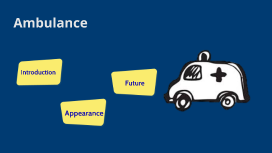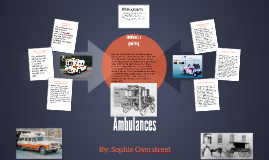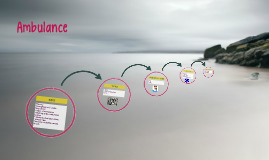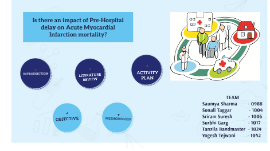Ambulance
Transcript: Remote Patient Monitoring System Remote Monitoring of Vital Signs: » ECG (3, 5 and 12 lead) » Heart rate » Plethysmogram » SpO2 » Blood Pressure » Respiration rate » Temperature » EWS "Early Warning Score" » HRV » QRS » Events Ambulances Dyna-Vision™ allows for continuous and real-time remote monitoring of patients by hospitals, cath labs and emergency departments. Benefits of using Dyna-Vision in Ambulance: True remote monitoring technology for Emergence Medical Services. Remote resting ECG monitoring, SpO2, Respiration, Blood Pressure, and Temperature connects to a central server automatically by using its internal 3G,WiFi modem. Hospital can monitor the patient and advise the EMS crew on treatment strategy. The effect of the treatment can be monitored in time . When the patient arrives at the hospital, monitoring inside the hospital is continued without changing wires, sensors or electrodes. Remote Cardiac Diagnostic Services No peripherals required Store and look back of data 3, 7 and 12 lead ECG display With the built-in data transfer tool physicians can share patient data via secured data transfer The automatic software updater checks for new software releases on our server Your system is always up-to-date Dyna-Vision continuously measures vital signs and transmits these to the Central Monitoring Station where the Dyna-Vision with EWS Index is calculated. The "Index" ranges between 0.0 -5.0 and is continuously calculated for each patient connected to the system. Validation studies1,2,3,4,5 show that the Dyna-Vision with EWS Index monitoring predicts critical medical conditions up-to 6,3 hours in advance. This enables clinicians to respond effectively to changing medical condition of their patients. Dyna-Vision with EWS Index monitoring is the perfect solution for hospitals that wish to expand the capacity of intensive care and medium care departments without the high investment that is typically associated with monitoring equipment. With this product solution it now becomes possible to continuously monitor patients who are in other departments throughout the hospital and even at home. Improvement of the communication between clinicians and the intervention teams Dyna-Vision contains a built-in cellular modem with SIM card by which the vital signs and location are transmitted to an external location automatically and in real-time. The Netherlands 0 = normal 3 = Alert (caregiver intervention necessary) 5 = critical (crisis) TechMedic International As Salam Int. Hospital, Cairo, Egypt Dyna-Vision is the only product in the world to offer continuous remote monitoring of vital signs without needing any peripherals for the transmission. Insert new patient data Short term stay by reduced incidence of complications Saving of costs because patients can be sent home earlier Temperature When the internal cellular connection is used, the cardiac events are transmitted automatically to a remote station for interpretation. For more information visit: The device measures up-to 12 leads ECG, Sp02 , Plethysmogram, Respiration, Blood Pressure and more. Dyna-Vision allows for immediate notification about changing medical conditions of patients www.dyna-vision.com or www.tmi.care Contact us for a remote demonstration of the ECG and Vital Signs solution Insert new patient Kuwait State Plethysmogram EWS software automatically analyzes and generate a predictive index (0-5) representing the patient’s wellness Benefits Saving of costs by the reduction of unnecessary complications More patients can be treated at the same hospital in shorter time Hospitals Ambulances Cardiology Dept. Home Service Providers Nursing Home General Practitioners Prisons Public Places Military Cardiologist can now quickly assess the patient’s disease and start treatment sooner than with other products. EWS Index monitoring predicts critical medical conditions up-to 6,3 hours in advance. Smart Phone App. for IOS and Android from Dyna-Vision System - 4 level of alarms for each parameters can be setup for each patient individually. - The alarms can also be pushed to pre-defined email accounts, secured twitter accounts or SMS. Applications: EWS, Early Warning Score EWS, Early Warning Score Querying data from server Hart rate

















